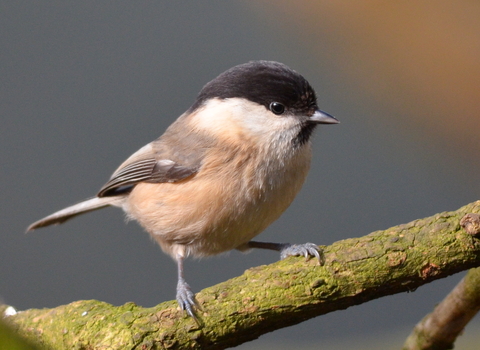Working in partnership with the RSPB and the West Midlands Bird Club, the Tame Valley Wetlands Partnership led by Warwickshire Wildlife Trust has been successful in securing £20,020 via the Severn Trent Water Boost for Biodiversity Fund.
About the project
‘On a tree by a River’ aims to help bring back from the brink one of the most threatened native birds in the UK, the willow tit, in one of its last strongholds in the West Midlands. We want to give local people a stake in its future now and for generations to come.
What is the issue?
The willow tit (Poecilid montanus) was once a comparatively common and widespread bird across the UK. Until the 19th century it, and the closely related marsh tit, were considered to be one and the same species. It is now recognised as a separate species and has recently seen a dramatic population decline of 94% between 1970 and 2012. This is the second largest decline of any resident bird after the turtle dove, and it is now on the Red List meaning willow tit is of the highest conservation priority. Factors such as habitat loss and lack of suitable nesting sites are believed to have contributed to the decline.
Willow tits are highly territorial so to expand its range and to see an increase in population would require increasing areas of suitable habitat, providing space for young birds to move into. Willow tits prefer young, low, wet woodland and typically excavate a new nest each year in dead wood. With this preference for younger woodland it’s important to have active management in the area to ensure it stays in optimum condition. Frequently wet woodland will dry out and develop into mature woodlands as is expected through natural successional changes. By managing the woodland, we can ensure there will be breeding and nesting opportunities well into the future.
The Tame Valley holds a number of nationally important willow tit strongholds with Ladywalk Nature Reserve, managed by West Midlands Bird Club, and Middleton Lakes, managed by the RSPB. With this knowledge, a project was developed that focussed on the Tame Valley as a wildlife corridor and therefore a potential route of expansion for willow tit.
What will the project do?
The project will enhance existing sites and create new habitats specifically to improve connectivity between the known territories such as at our reserve at Whitacre Heath. Overall the project will aim to achieve a total of 10 hectares of habitat improvements. This will be done by a number of different methods including improving and creating appropriate habitat, creation of additional wet areas and provision of suitable nest sites, such as standing deadwood. There will also be a large focus on surveying existing and potential sites to better understand willow tit numbers up and down the valley. Through this citizen science project, it will be possible to determine where to focus activities to get the best outcomes in terms of allowing young birds to expand out and ultimately lead to more, successful breeding pairs.
Working with the local community to increase awareness of willow tits, the value of the river Tame and its riparian habitats is a key part of the project. Volunteers will be actively involved throughout, helping to deliver all aspects from practical conservation through to appearing in vlogs that will be released during the course of 2021. Watch them below...
There is also an education programme which will give local children an insight into willow tits, rivers and wetlands, resulting in engagement with the conservationists of the future. This type of work is a great way to add legacy to a project and will enable us to encourage the next generation to take an interest in their local rivers.
Watch the vlogs here
On a tree by a river vlog one (https://youtu.be/hkfnpvABqcw)
The first of a series of vlogs for On a tree by a river
On a tree by a river Vlog 2 (https://youtu.be/WJUv9_jYz2w)
Simon Watts, WILD Presentations
This is part of the Tame Valley Wetlands Partnership, at the heart of the entire scheme are local people, waterways, heritage and wildlife. There are numerous ways to get involved including joining regular practical conservation sessions with Tame Force who work across the whole valley, or assisting on a specific project to gain in depth knowledge. For more information visit the website at www.tamevalleywetlands.co.uk

